THE LOST ART OF MOVING HOUSES (1900)
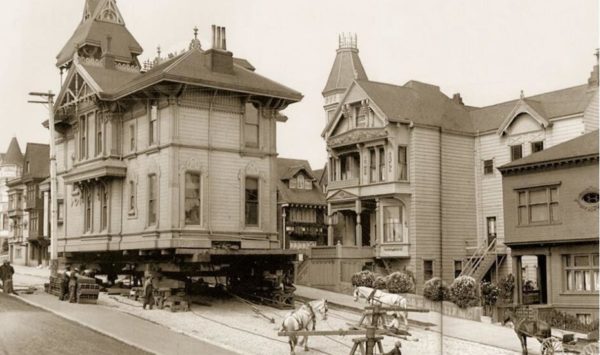
******************************************************************************************************************************** Brownstone Detectives investigates the history of our clients’ homes. The story you are about to read was composed from research conducted in the course of one of those investigations. Do you know the history of YOUR house? ******************************************************************************************************************************** An article in the 28 March 1900 edition of the Brooklyn Daily Eagle caught our eye the other day. It detailed an old practice of moving houses, and it took place in a time when the economics were such that their transport to another lot made more fiscal sense than tearing them down wholesale. In this story, however, the time it took to move this particular house took a toll on the neighboring residents. And, at one point, they gathered to tear the house down, themselves… THE HOUSE IN THE STREET The story took place in the early part of 1900 in Flatbush at the corner of Flatbush Avenue and Linden Boulevard. The subject was a frame structure that was being moved from that corner, although not quickly enough for local residents who protested the house’s temporary location on Linden Boulevard. And by “on Linden Boulevard,” we mean on the actual roadway itself. “A frame building stands in the middle of Linden boulevard, at its junction with Flatbush avenue. The building bears the sign of Vanderveer & Williamson, real estate agents,” the reporter started his story. Vanderveer & Williamson, we discovered – through combing the newspaper’s archives – were Adrian Vanderveer and Adrian N. Williamson, who had, by this point, had […]
A BUILDER, A BRIBE, & A BLOCKED VIEW (1904)
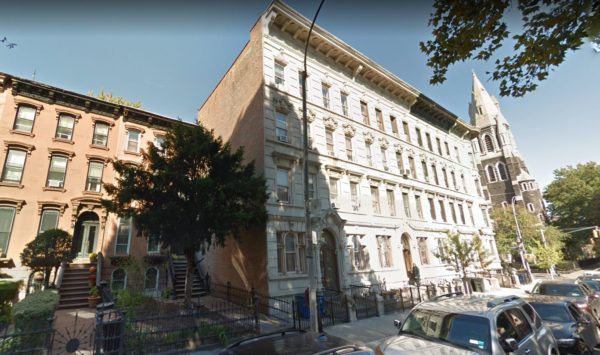
******************************************************************************************************************************** Brownstone Detectives investigates the history of our clients’ homes. The story you are about to read was composed from research conducted in the course of one of those investigations. Do you know the history of YOUR house? ******************************************************************************************************************************** After builder Chauncey G. Cozine had filed his building plans for a set of luxury apartment buildings to be constructed at the northwest corner of Throop Avenue and MacDonough Street, the neighbors were horrified to learn of the enormity of the structures. As a matter of fact, they were so taken aback at the prospect, that when they met to determine how to address the egregious assault on their homes, they dug deeply into their pockets – each of them as deep as he felt it was worth – to come up with a sum that, combined, would hopefully encourage Cozine to consider altering his designs. When Cozine received the offer, though, the 30-year-old builder answered the monetary plea with a curt one-word response. “No.” BEFORE THE FOUNDATIONS WERE EXCAVATED Before Cozine came along in 1904, the noble brownstone structures with their stately front gardens which sat along the north side of MacDonough Street, commanded unobstructed views up and down the street. From the front stoop of any of these structures, which belonged, incidentally, to some of the wealthiest residents of Stuyvesant Heights, could be seen rows of beautiful brownstone houses and the majestic churches of two different denominations. At the Tompkins end of the block, sat the Tomkins Avenue Congregational […]
THE BOMBING OF BROOKLYN HEIGHTS (1892)
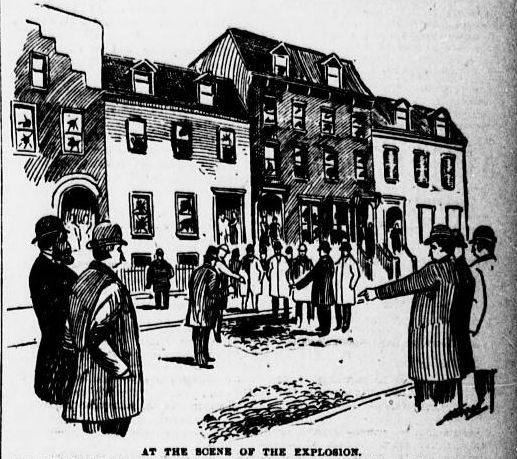
******************************************************************************************************************************** Brownstone Detectives investigates the history of our clients’ homes. The story you are about to read was composed from research conducted in the course of one of those investigations. Do you know the history of YOUR house? ******************************************************************************************************************************** It was just past 1 a.m. on a cool Saturday morning in the tony Columbia Heights section of Brooklyn. The police reserves of the Second Precinct, under the able leadership of Sergeant Joseph Carrougher, would soon be arriving on the scene. Carrougher’s desk sergeant had just awoken him out of a deep sleep at the Fulton Street police station. The sergeant had looked at him gravely in the dark of the room. “Somebody exploded a dynamite bomb on Willow Street.” “GROTESQUELY DRESSED, THE RESULT OF A HURRIED TOILET” When Carrougher arrived on the scene, he found Officer Seymour, “a portion of whose post was the scene of the explosion,” along with “a crowd of citizens” busily disturbing the crime scene. It was not too troublesome, however, having this crowd of citizens, “grotesquely dressed, the result of a hurried toilet,” tromping about the evidence. So long as they did not take anything that would assist in apprehending the guilty party. But many at the scene that night had begun amusing themselves “by digging out the fine white powder of the cobblestone with their penknives,” taking away samples. Sgt. Carrougher had seen it all in his 25 loyal years of dedication to the force. And while there were a number of clues that […]
DESIGNING THE MAID-PROOF HOME (1922)
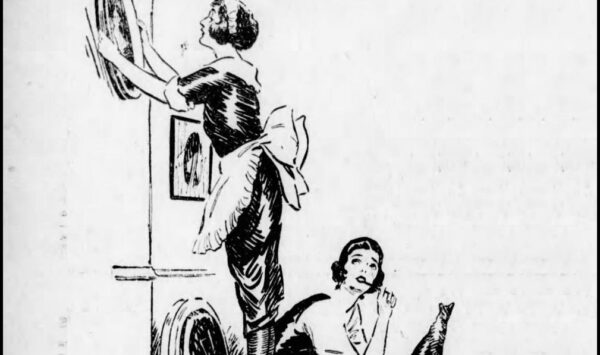
******************************************************************************************************************************** Brownstone Detectives investigates the history of our clients’ homes. The story you are about to read was composed from research conducted in the course of one of those investigations. Do you know the history of YOUR house? ******************************************************************************************************************************** We all know how difficult it is to keep a good maid. They are constantly “on the make” for higher wages or, worse, threatening to leave your employ for that of another family. But Brooklyn builders in 1922 were working strenuously to help you keep your hired help. Towards this end, they seemed to have lit well upon the solution to this dilemma: “Make a home so convenient for the lady of the house that she can do much of her own work, and, more importantly, make the maid’s room so light an airy that she’ll never want to leave.” THE MAID-PROOF LAYOUT Of course, these, presumably male, architects didn’t fail to consider the arrangement of the kitchen, where women – and maids, of course – did much of the work. Make it so arranged, said these particular architects, that it is attractive, as well as convenient. The architects, in the layout of this new model house, show a “very complete service portion with laundry on the first floor, adjoining the kitchen, instead of in the basement, as is usually the case.” Additionally, the kitchen boiler, they note, “may be placed in the basement” instead of the kitchen, where, in the past, it’s made that room “uncomfortably warm in summer.” DOWNSTAIRS. […]
BENSONHURST BOY EATEN BY LIONS (1914)
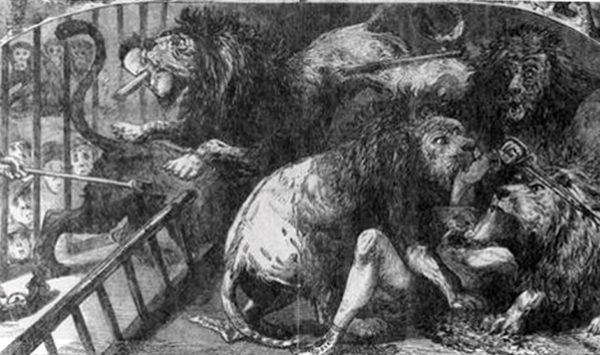
******************************************************************************************************************************** Brownstone Detectives investigates the history of our clients’ homes. The story you are about to read was composed from research conducted in the course of one of those investigations. Do you know the history of YOUR house? ******************************************************************************************************************************** Most people who hear about lions attacking, mauling, and killing human beings envision these violent scenes taking place in the natural habitat of these beasts where they roamed and hunted prey. But the country was mystified by a story that came out a little more than 100 years ago about just such a lion assault – taking place in Chicago. DAREDEVIL DIETRICH AND THE SIX LIONS The son of a wealthy Bensonhurst architect, Emerson D. Dietrich was a graduate of Erasmus High School. He had lived with his parents and his three brothers at 8642 Bay Parkway until he had joined the circus just six months prior to his death. Dietrich, it was learned, had wanted to be near the lions, of which he was fond, and so he had become the manager of Madame Adgie Castillo, the lion trainer. Dietrich, 24, had lived a daredevil’s life, according to his father, who spoke to the Brooklyn Daily Eagle the day after the attack. “He won medals of every sort, but he joined no society,” the elder Dietrich said, “for he was a society in himself. “He had hundreds of friends who came to see him. He didn’t need a society. Then in 1909, he graduated and, for the first time we, […]